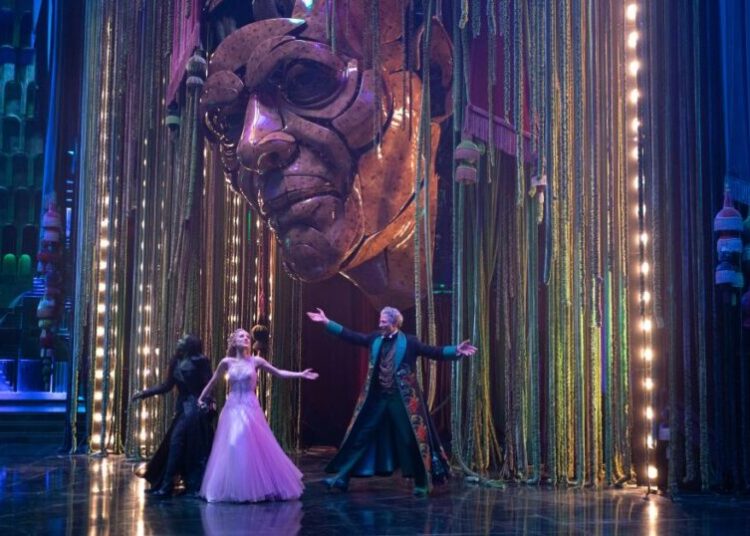For much of the world, the Taj Mahal is a place of wonder. By far the most famous monument in India, it is visited by diplomats and romanticized in films. Its origin story — built by a 17th-century Muslim ruler as a mausoleum for his favorite wife, who died in childbirth — is taught in classrooms and honored as a UNESCO World Heritage site. For generations it has been a national emblem of artistic excellence and cultural sophistication that transcends regional rivalries, politics and religion.
Yet in recent years the Taj has also become a contested site, targeted by those determined to recast India’s pluralist history. The symbol of love is now a flash point in India’s historical antagonism between Hindus and minority Muslims, a battle between historians — a battle over truth, identity and power.
The latest salvo is the film “The Taj Story.” Directed by Tushar Amrish Goel, it follows Vishnu Das, a guide in the city of Agra who is convinced the Taj was originally a Hindu structure, possibly a temple dedicated to Shiva. Suspended by the Tourist Guides Association, he initiates a judicial procedure called public interest litigation to “uncover” the monument’s origins.
As the film moves to the courtroom, the central question becomes not history but national identity. To make his case, Das demands the excavation of 22 rooms beneath the Taj, which have been officially sealed from public view — some for decades, some for centuries — for structural and security reasons.
Das’s convictions echo a conspiracy theory that has circulated for years: that the Taj has hidden Hindu origins. In 2022, the Archaelogical Survey of India attempted toquell the rumors by releasing photographs of these rooms undergoing restoration but with little success. Now Goel’s film packages the suspicions as mainstream entertainment. Clips from the film, which was released Oct. 31, have spread across WhatsApp and YouTube, reinforcing the idea that the people who built India’s historic monuments were invaders and oppressors.
The film questions whether Shah Jahan, the fifth emperor in the Mughal dynasty, built the Taj from scratch or repurposed a Hindu palace, using this debate to imply deceit and civilizational betrayal. It projects Muslims as the perpetual other, with Das describing the Taj as “a symbol of atrocity, a symbol of genocide”— an inversion of historical record and an attempt to transform beauty into threat. The film caricatures traditional scholars of Mughal history as conspirators without engaging with actual scholarship. (In response to criticism, the film’s production team has issued a statement saying the movie “focuses solely on historical facts” and does not “claim that a Shiv temple resides within the Taj Mahal.”)
“The Taj Story” fits into a larger climate shaped by Hindu nationalist rhetoric and amplified through India’s influential popular culture. Bollywood has produced a steady stream of films, including “Chhaava,” “The Kashmir Files” and “Padmaavat,” that reimagine history, often portraying medieval Muslim rulers as bloodthirsty tyrants, flattening centuries of Indo-Islamic contributions to architecture, music, literature and cuisine into a single narrative of oppression. For some time before Goel’s movie, the Taj Mahal’s global visibility and symbolic power had made it a target of such historical revisionism.
It’s mirrored in messaging from political leaders. Yogi Adityanath, the chief minister of Uttar Pradesh, India’s most populous state, has repeatedly questioned the Taj Mahal’s place in Indian culture. His government omitted the monument from an official tourism pamphlet, and he has said it does not reflect Indian heritage. His remarks have encouraged a broader ecosystem of politicians, television commentators, activists and online influencers, many of whom now treat the Taj as an unwelcome reminder of a past they wish to erase.
These attacks rely on a political repurposing of the word “Mughal.” Historically the name of the Muslim dynasty that ruled much of South Asia for hundreds of years, the term is now deployed by Indian Hindus as shorthand for the country’s Muslim minority. It’s a dog whistle that allows politicians to evoke a civilizational conflict without naming the minority they wish to stigmatize. This doublespeak is apparent each year on Independence Day, when the prime minister delivers their speech from Delhi’s Red Fort a grand Mughal monument. It’s the epitome of the government embracing Mughal architecture while rejecting the history and culture that produced it. The aesthetic is adopted but the pluralism is repudiated. Meanwhile, the five most popular Mughal monuments in India generated more than $60 million from 2019 to 2024. The economic benefits are welcomed; the cultural lineage is not.
The target is not merely a set of monuments — it is a community of more than 200 million citizens, about 14 percent of India’s population. When films portray Muslims as inheritors of cruelty, when leaders dismiss their cultural heritage as foreign, and when “Mughal” becomes shorthand for disloyalty, the consequences seep into schools, neighborhoods and daily life. They shape how Indians perceive one another.
The Taj Mahal is part of the world’s shared cultural heritage. Attempts to demonize it do not merely distort history; they damage India’s international reputation. For a nation that seeks global leadership, this is not a trivial consequence.
The monument has survived conflict, colonialism and the corrosion of time. But the threat it faces today is more insidious: a story deliberately reframed, beauty deliberately tarnished, history deliberately fractured.
The post The Taj Mahal’s luster is tarnished by a religious dispute appeared first on Washington Post.




